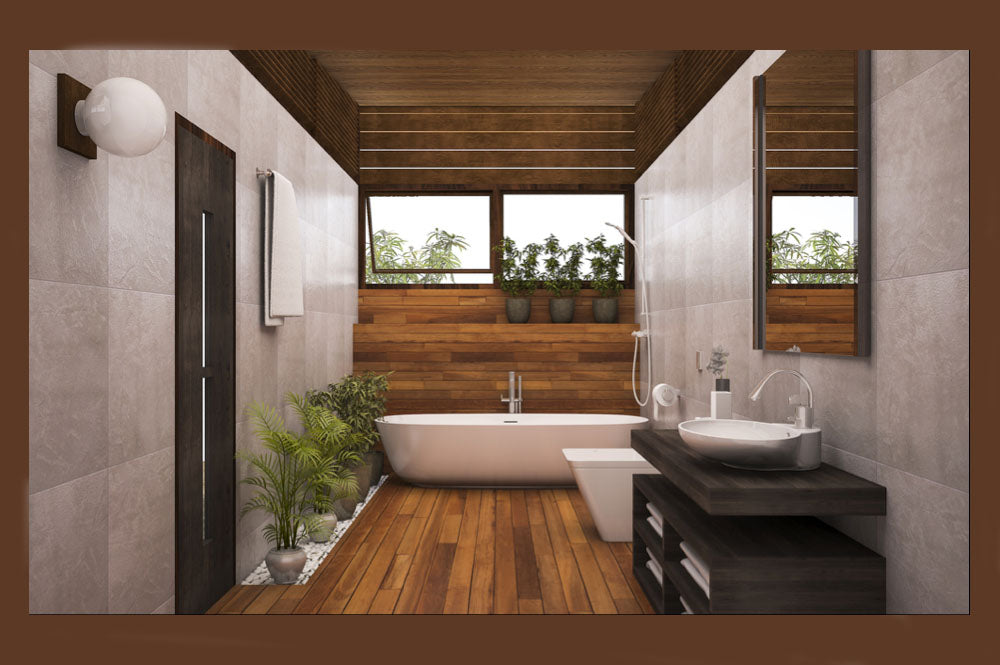Wood Flooring Trends for Every Room

This piece was written by Zoe Dromgoole, wood flooring expert, Wood Flooring Ireland. Editing by Sandra Mardenfeld.
Have you been thinking about upgrading the floors in your home? It’s a good investment. Besides refining the look, such renovations can help increase a home's value, up to 5%, according to Money.com.
Wood floors are extremely durable, and they can often add a much-needed sense of warmth to any room. These floors are also excellent solutions when dealing with high levels of foot traffic. There are many styles to choose from and different types of wood can be used to address specific rooms.
Globally, the wood flooring market is projected to increase from $3.3 billion in 2019 to $4.2 billion by 2027. So, it is clear that wooden floors have become popular. Here is a guide on what flooring works best on a room-by-room basis. Then, it will then be much easier to make the best decision when you’re ready.

Kitchen
Kitchens are highly functional areas of the home. Since they are used frequently, the wood needs to be both durable and attractive. Hardness must be considered. Lighter tones work better in these spaces to help brighten the room, especially if the kitchen is small.
It is also a good idea to choose planks that can contrast with one another in patterns and colors. This adds a sense of visual depth to your kitchen. You can even consider choosing unique patterns such as chevron or herringbone.
Living Room
Living rooms tend to be one of the largest areas of the home, and are used regularly. So it’s a good idea to select materials that can withstand the test of time. Maple, oak and hickory all fall into this category. Lighter hues can be used to provide the illusion of space while dark tones offer a warm and organic feel to more spacious locations.
Long planks are very appropriate for living rooms. They tend to offer a sense of aesthetic continuity; blending with other types of flooring that may be found nearby. Neutral tones tend to be the best options. These will not clash with other room design trends such as bespoke lighting, bold wall accents and pastel-colored furniture.

Bathroom
Most of us consider materials such as stone and tile to represent the only solutions when dealing with a bathroom. While these are very popular choices, there are a few drawbacks. Tile and stone are heavy, and can place additional loads on the subfloor.
Wood floors are becoming increasingly common within many bathrooms due to the sense of warmth they project. They are easy to maintain and come in numerous tones. The only possible issue here involves high levels of moisture, which is why industry experts usually recommend opting for engineered wood flooring. The ornamental layer must be made of genuine wood for a floor to be deemed engineered. These floors can only have a natural ornamental top layer, as opposed to laminate flooring, which can also have a decorative layer that is a print.
Engineered wood floors will stand up well to changes in temperature and humidity. So, concerns such as bowing and warping are removed. Engineered wood often comes with a 10- to 20-year product warranty as well. Plus, it is easy to install and comes in many colors.

Hallway
Some portions of the home are purely functional. While we do not spend a great deal of time in hallways and stairwells, these surfaces endure tons of foot traffic, which requires harder materials, such as hickory and maple.
However, those on a limited budget may not be able to afford these materials. Engineered alternatives, such as long plank flooring, are also great options. This flooring offers longevity and is easy to clean. You can use a vacuum and a wrung-out mop, but be careful of getting the floor too wet as it will damage the material.
Once again, try to choose a pattern and style that can be integrated with other nearby floors. You might otherwise find that your home lacks a sense of continuity.

Attic Space
Many homeowners want to take advantage of interior space. So, it is not uncommon for an attic to be converted into a comfortable loft. Whether used as a convenient home office or a spare bedroom, these areas are both functional and practical.
Laminate and engineered floors provide the best options here since they can last over 30 years, are easy to install, use sustainable methods for production and are easy to clean.Natural materials are also a possibility, but installing planks in a small area can be challenging.
Another unique tip here is to arrange the planks so that they are parallel with the length of the room as opposed to the width. This will make the loft itself appear slightly larger. Lighter hues can also be selected if you wish to accentuate the sensations of a spacious environment. Dark tones could be better if you are more concerned about organic warmth during the colder months of the year.
Converted Basements
Similar to bathrooms, moisture is always a concern when dealing with a finished basement. This is why laminated and engineered materials tend to be the best options. They are also cost-effective solutions if you happen to be addressing a large area. They tend to range between $4 to $7 per square foot in the U.S., and slightly more in other areas..
Want to read more about re-designing your home? Why not try our blog post on home decor on a budget?
Share
Get on the list
Sign up for our newsletter and we’ll keep you up to date on the latest news and exclusive offers!

Leave a Comment